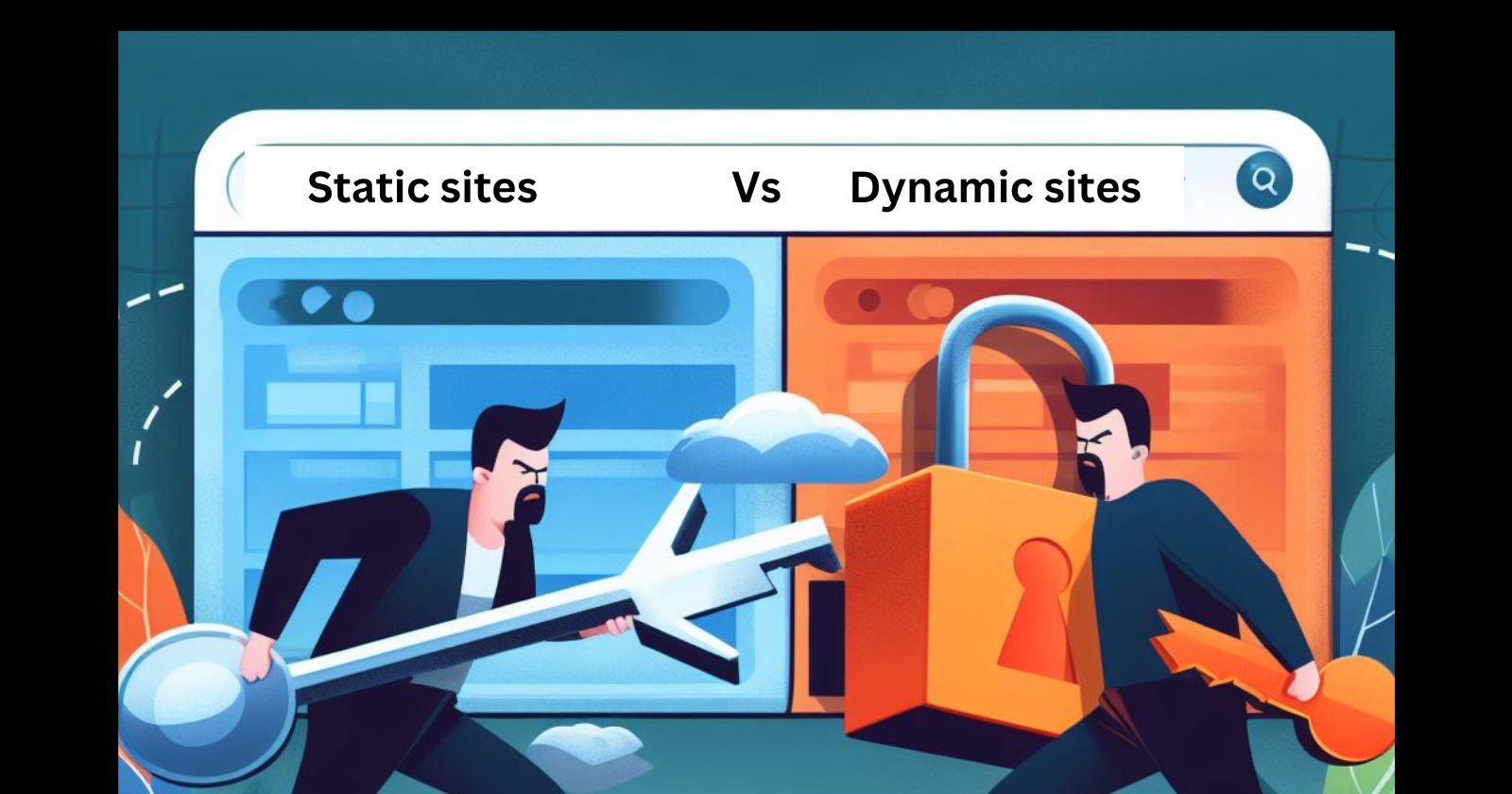Static Website vs Dynamic: Key Differences Explained
 Pratik M
Pratik M
Websites come in two main types - static and dynamic. Understanding the core differences between these two is crucial when deciding what kind of site you want to build. This guide will explain static and dynamic websites in simple terms and highlight the advantages and disadvantages of each.
What is a Static Website?
A static website consists of a series of predefined HTML pages that display fixed content to users. The pages and assets like images are all created ahead of time and do not change based on user actions or dynamically pulled data.
Some key characteristics of static sites:
Prebuilt HTML pages
Fixed, unchanging content
All assets are created upfront
No need for web databases/server-side code
Fast load times
High security
Static sites are extremely simple. When a user requests a page, the fixed HTML file is directly returned by the server. There's no complex processing done to generate or customize each page uniquely.
This simplicity is why static sites tend to load extremely fast and have fewer points of failure compared to dynamic sites. They also pose fewer security risks since there are no backends vulnerable to threats.
Common Examples
Personal portfolios, marketing landing pages, and simple brochure sites.
What is a Dynamic Website?
In contrast to static pages, dynamic websites generate custom page content on the fly when a user requests a page. The content is assembled by pulling data from databases and leveraging server-side technologies.
Some characteristics of dynamic sites:
HTML pages generated upon request
Content changes based on database data
Uses server-side code (PHP, etc)
Relies on database backends
Slower load times
More attack vulnerabilities
For example, a blog site pulls the latest blog posts out of a database when serving content. Product inventory levels on an e-commerce site get updated dynamically based on orders placed. User profiles display based on session data.
So essentially, dynamic sites produce customized page views assembled on demand vs fixed upfront.
Common Examples Blogs, online stores, social networks, content/community sites.
Key Differences and Comparisons
| Factor | Static Website | Dynamic Website |
| Page Content | Fixed, predefined | Generated on-demand |
| Load Performance | Very fast | Slower |
| Security | Very high | Vulnerable backends |
| Scalability | Hard to scale | Highly scalable |
| Functionality | Limited | Custom & complex available |
| Development Effort | Simpler & Faster | More complex |
Let's analyze some of the key differences:
Speed: Static sites are intrinsically faster given their simpler nature and lack of backend processes needed. No query latency or computing happening per user request.
Security: Static sites are highly secure since there is no server-side attack surface. Whereas dynamic sites are vulnerable to SQL injection, DDoS attacks on databases, and so on.
Scalability: Dynamic sites scale better for high loads and traffic. Static sites have to be replicated manually which gets complex for larger websites.
Functionality: Dynamic sites support extensive features from user logins to custom admin UIs. Static sites have significant functionality limitations.
Development Effort: Building static sites takes less effort upfront given their simplicity. Dynamic sites require specialized skills and ongoing maintenance.
Determine priorities across these factors above when deciding on the right type of site to build for your needs.
When Should You Use Each Type?
Static sites make sense when you want maximum speed, security and simplicity - with tradeoffs on functionality and scalability. They work extremely well for marketing sites, portfolios, and informational content that doesn't need much customization.
On the other hand, dynamic sites enable fully-featured web apps with customized user experiences. They scale seamlessly through modern infrastructures like cloud platforms. Build these when you need complex apps, user logins, admin panels, and dynamic experiences.
Figure out your priorities and whether advanced functionality is a requirement before deciding on static vs dynamic.
Build Your Site the Right Way
Now that you understand the core pros and cons of static and dynamic websites, you can determine what fits your particular needs best. Static sites provide unmatched speed and security for simpler sites. Dynamic sites enable richer functionality, scalability and customization at the cost of more complexity.
Weigh your priorities, objectives and constraints. The technical differences outlined here should make your decision straightforward. With a clear resolution in mind, you'll be equipped to build and deploy websites using optimal technology from the start.
Subscribe to my newsletter
Read articles from Pratik M directly inside your inbox. Subscribe to the newsletter, and don't miss out.
Written by

Pratik M
Pratik M
As an experienced Linux user and no-code app developer, I enjoy using the latest tools to create efficient and innovative small apps. Although coding is my hobby, I still love using AI tools and no-code platforms.